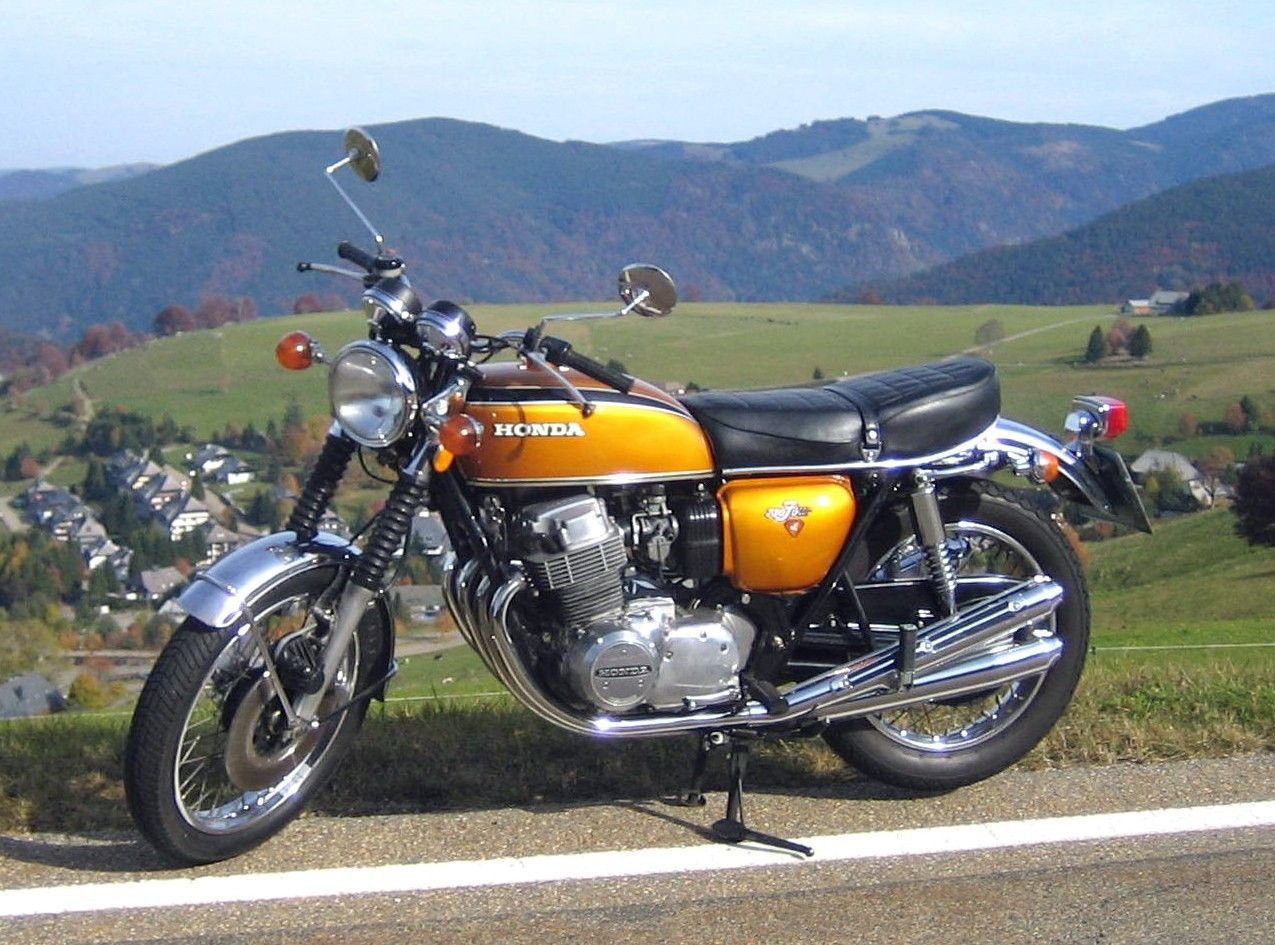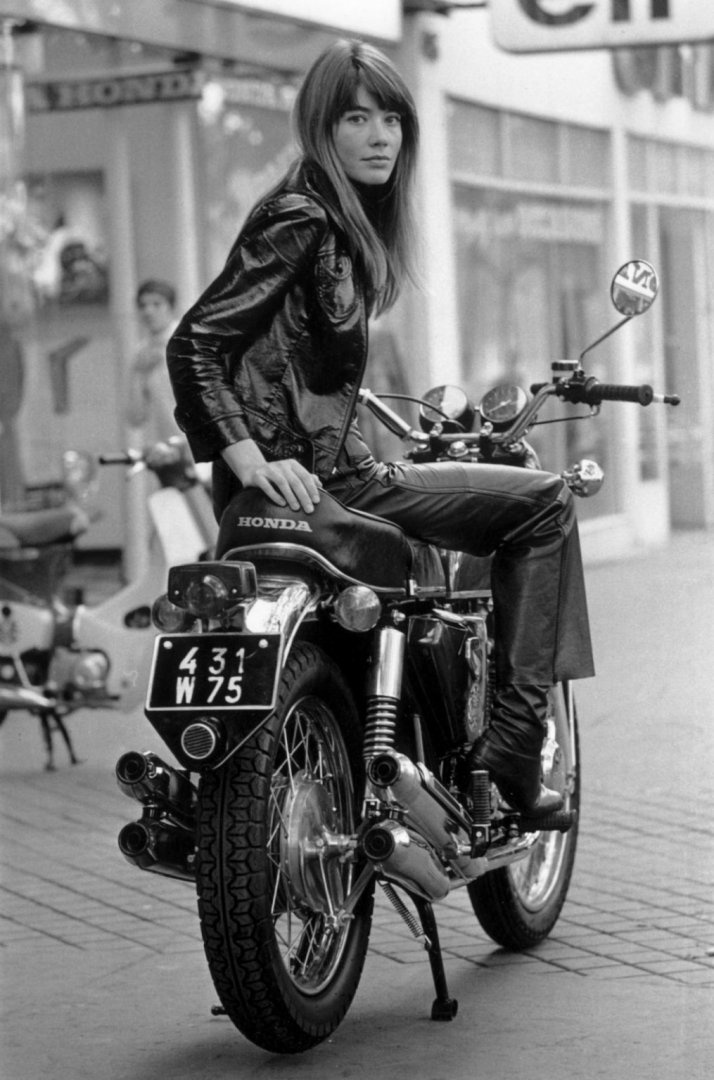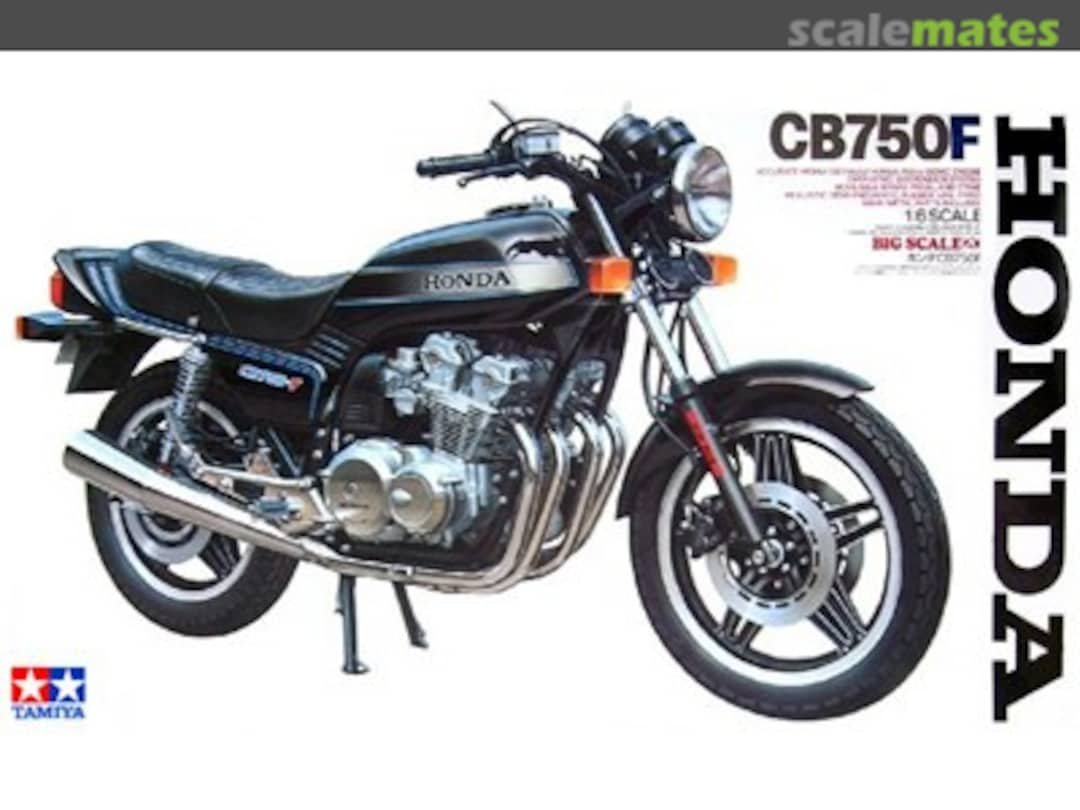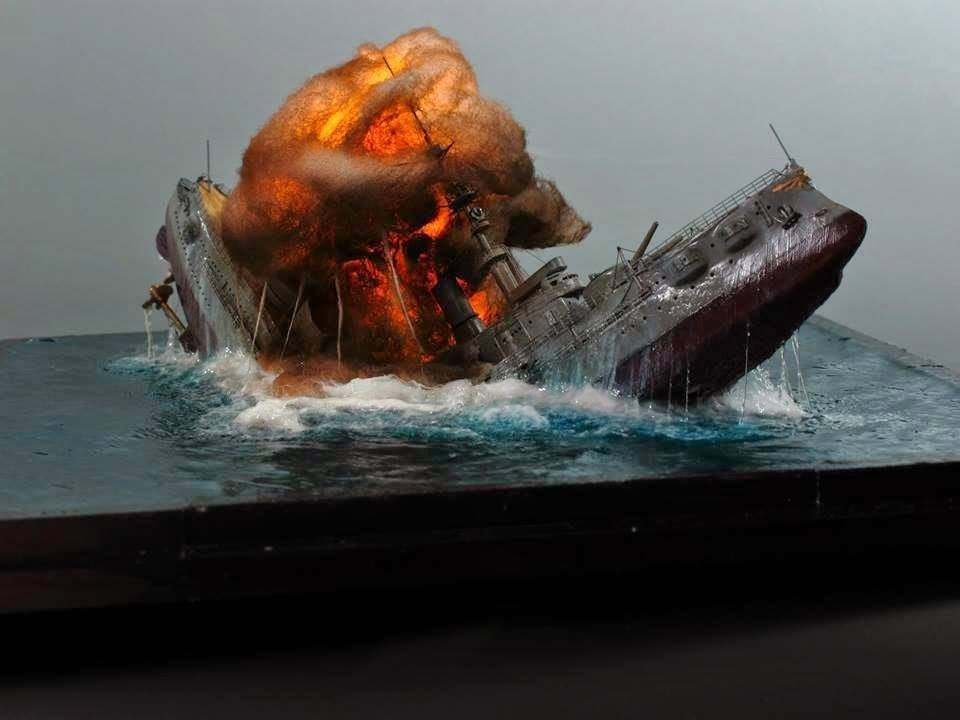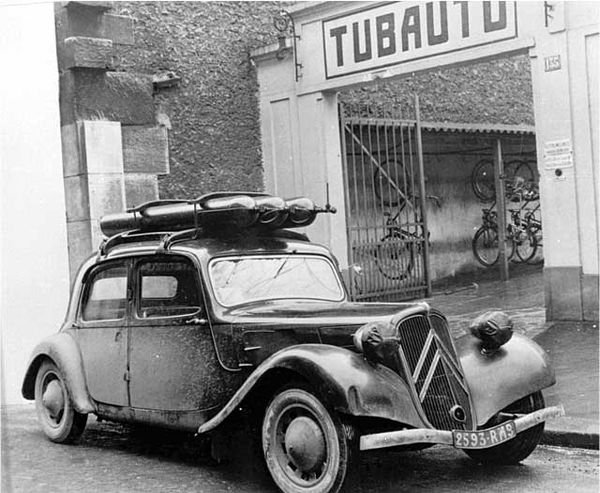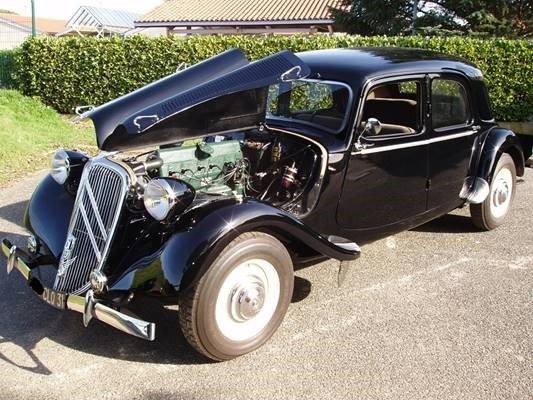-
Posts
3,484 -
Joined
-
Last visited
Content Type
Profiles
Forums
Gallery
Events
Everything posted by yvesvidal
-
Yes, it is a bit easier but I am glad I finished the front wheel. Once you get the pace, it goes relatively smoothly. The trick is to be organized and to do one spoke at a time. For the MPC model at 1/8, I did not replace the spokes.... I do not know how this Japanese Kinishi Karube does it, but I am not able (or willing) to spend so much time perfecting a plastic scale model. So, here is the process: Both sides done, all chrome paint removed, ready for gluing: Details of the insect pins used for that model: Gluing phase. You need a lot of clamps, as there is a tremendous pressure for both sides of the wheel to split: Plastic glue with a layer of CA glue to secure the whole thing. Let it dry for a few hours. Ready for mounting the tire: And the front wheels finished: the MPC model is a lot easier to put together.... Re-spoking is a lot of work, but I believe that the end result is worth it. Notice the difference of tires: Tamiya has Bridgestone whereas MPC proposes Good Year. Tamiya tire is 3.25 x 19 and MPC tire is 3.75 x 19. Slightly wider on MPC and their "9" looks like a "0". Yves
-
And the craziness starts.... On the Tamiya kit, the wheels are very nicely molded, but these spokes chrome plated and touching each others, are not exactly realistic. So, I jumped in and decided to replace all the plastic spokes with insect pins. I purchased the larger size (#5) which at the scale of 1/6 are very close to the diameter of the prototype spokes. It is a very tedious job and I am replacing one spoke at a time, to keep the wheels round and concentric. The pins I have are of the perfect length and once bent, fit without any additional cutting.... a bit of luck. The end result is not too bad and you can compare the kit wheel and the reworked wheel: I did not install the small brass pieces used to adjust the tension of the spokes. I could not find any tube or insulating material small enough to do a good job. In addition, the color would probably not match and the size of these parts is really so tiny that I decided to skip them, completely. The difference in rigidity of the wheel flange is amazing. Where the plastic flange can be bent easily, the metal spokes are very sturdy and solid. Here you can compare how the spokes are behaving: quite a contrast!! Plastic above, stainless steel below: Other side, showing how this is all put together: The idea of re-wiring (or re-spoking) the wheels came from what I consider to be the best motorcycles kits builder in the world: Kinishi Karube. His site can be reached at: http://kimshouse7015.com/ Yves
-
Folks, This is a crazy idea, but I have to try it: Build two models of the same Vehicle, but at different scales. I have also decided to not build another war machine (for the time being) as the planet absolutely needs a wind of peace, harmony and balance. I am a fanatic about Motorcycles and started riding at the age of 13 years old (legal age in France was 14) using mopeds from friends. At the age of 14, I got my first little motorcycle, a DERBI 50 cc with a gearbox with 3 speeds controlled by the foot. The gear patterns were reversed from the Japanese motorcycles and what was to become the standard, but the idea was there. I still have that DERBI bike and moved to a Suzuki 125 GT, at the age of 17. All my youth was spent admiring these big machines such as HONDA CB750, CB550K, LAVERDA, Moto Guzzi V7, Suzuki and other Kawazaki Mach 2 and 3 (the widowmakers) and smaller motorcycles such as the Yamaha, Honda CB125 K4 and many more. A large chunk of my life would then be spent without owning any motorcycle but the urge was always there. In 2001, I purchased a BMW R1100S that I still have today and ride occasionally (that model was never reproduced in scale model, unfortunately). One of my favorite bikes and one that truly revolutionized the world of motorcycles, was the HONDA CB750 Four introduced in 1969 to the world. Much has been said about this bike but I never had a chance to ride it, unfortunately. I did ride the CB 550K and the CBX 1000 with six cylinders in line, though. These were two incredible bikes, especially the CBX with its fantastic power, speed and accelerations. When the CB750 Four K0 came out, it was immediately embraced as a cult bike and many famous people in Europe (and elsewhere) were seen riding it. Here is an example of French singer Francoise Hardy, riding her CB750 in the streets of Paris: Back to the scale models, after this brief introduction of the fantastic HONDA CB750 Four. I built the HELLER Honda CB750 (1/8) in 1971 when that model came up on the French market. I was not even a teenager at that point and my passion for motorcycles was already intense. HELLER was proposing a large choice of models, all in the scale of 1/8: Nortons, BMW, Laverda, Honda, Kawazaki, Yamaha and a few others. The HELLER model was fantastic and very realistic and seems different from the MPC model that I will be trying to build. I compared the sprues of the HELLER and the MPC kits, and they are vastly different although at the same scale. First the TAMIYA kit at 1/6th, which is a classic and has been available for a very long time: The kit I bought on E-Bay long time ago, is very old and the decals are damaged due to their ages. All the other parts (rubber mostly) are still in very good shape and flexible. I contacted TAMIYA USA who offered to sell me another set of decals as soon as the stupid confinement is over. For the scale of 1/8, I could not get an HELLER kit at a decent price and thus fell back on the MPC kit. Both Tamiya and MPC are depicting the original K0 version of the CB750, with its sleek air box and its lack of the small lights dashboard, available on later model K1 to K4 as well as the later CB 550K bike. As indicated before, I am going to try to build the two kits at the same time. I have never done that before and I honestly think it is crazy. However, it will be interesting to compare the excellent and extremely detailed Tamiya kit with the more common and affordable MPC kit and appreciate the different sizes of the parts and sub-assemblies. Progress will be slow as I still have to finish my submarine. Yves
-
Yeah!!! Thank you for presenting this rare model. Yves
-
Amazing realism Greg. This is just getting better and better with each model. Along the lines of Borodino, how about something like these pictures (taken from Pinterest): Or a little diorama like this one below: Seriously, I love your work. It is splendid. Yves
-
Well, I use a small white cotton rag to suck extra CA glue. Yes, works very well, and speeds up the gluing process. Yves
-
Kevin, I think you took the right decision. I would have hated seeing that beautiful hull, cut. Yves
- 337 replies
-
- finished
- mountfleet models
-
(and 1 more)
Tagged with:
-

Citroen Traction Avant by kpnuts - FINISHED - Heller - 1/8
yvesvidal replied to kpnuts's topic in Non-ship/categorised builds
As Egilman indicated, the Citroen Traction Avant was the favorite car of the "La Resistance" movement, fighting against the German invasion in certain parts of the French territory. The Traction was used for multiple reasons, its performances (unsurpassed by any other cars), its reliability, range, size, road handling and capacity. It became the darling of these French groups, fighting in the shadows against Hitler Nazis regime. The Traction engines were even modified to run on gas, as liquid fuel was becoming very rare, and you can see some models equipped with these long metallic bottles on the roof. Parisian taxis were using them a lot in their "gas" conversion type and after the end of the war, that car continued a brilliant career with many different professions and trades. I met a gentleman who had done more than 500,000 kilometers with the same chassis on a 11CV Traction Avant. Granted, the engine had been redone twice. This kind of figure was totally unseen when most cars had a life expectancy of around 70K-100K kilometers maximum. Yves -
You are a very brave man Jan. Floating this monster requires a certain dose of courage, especially after all the efforts you put into building it. The only Bismarck I "floated" was an old Lindberg Bismarck kit (1/350th) with a two ways radio control in it. It was a lot of fun. Yves
-
That is truly impressive. What a beautiful model. I love the fact that you decided to do the early "Camouflage" painting, that you installed all the lights and to top it off, that you made the model floating and RC controlled. What a fantastic achievement. Yves
-

Citroen Traction Avant by kpnuts - FINISHED - Heller - 1/8
yvesvidal replied to kpnuts's topic in Non-ship/categorised builds
Personally, I'd like to see: - the Airfix Bentley 1/12 - the Monogram Corvette. Is it a C2 or a C3? I built the C3 when I was a teenager. Wish I had kept it.... - The London Bus would be interesting too. Yves -

Citroen Traction Avant by kpnuts - FINISHED - Heller - 1/8
yvesvidal replied to kpnuts's topic in Non-ship/categorised builds
Your traction is so realistic. It is superb. As you realize, the front bumper was an option as well as the extra headlight mounted on them. Here is the vehicle my brother rebuilt entirely: Yves -
I wish I could. It is not possible....this stuff is buried in the Radio/Sonar module and totally unreachable. Not a big deal in the grand scheme of things.... Yves
-

Citroen Traction Avant by kpnuts - FINISHED - Heller - 1/8
yvesvidal replied to kpnuts's topic in Non-ship/categorised builds
Oh No! Yves -

Italari 1/12 Mephistopheles by kpnuts
yvesvidal replied to kpnuts's topic in Non-ship/categorised builds
Another great kit. I saw a finished Mephistopheles at a scale model show in Toulouse, in 2017. I was very impressed and this kit has been on my list since that time. I will be following your build with a lot of interest. Excellent choice. Yves -

ancre Coureur by cafmodel - 1/48
yvesvidal replied to cafmodel's topic in - Build logs for subjects built 1751 - 1800
Great ideas and tricks to bypass the Copyrights. Well done. Yves -

ancre Coureur by cafmodel - 1/48
yvesvidal replied to cafmodel's topic in - Build logs for subjects built 1751 - 1800
This looks like a very promising kit. Is this kit free from legal ties with that French company (Ancre)? Although it sports a French name, the plans and documentation seems to be in English. Hopefully, there will not be any Copyrights problems for this beautiful kit. Yves
About us
Modelshipworld - Advancing Ship Modeling through Research
SSL Secured
Your security is important for us so this Website is SSL-Secured
NRG Mailing Address
Nautical Research Guild
237 South Lincoln Street
Westmont IL, 60559-1917
Model Ship World ® and the MSW logo are Registered Trademarks, and belong to the Nautical Research Guild (United States Patent and Trademark Office: No. 6,929,264 & No. 6,929,274, registered Dec. 20, 2022)
Helpful Links
About the NRG
If you enjoy building ship models that are historically accurate as well as beautiful, then The Nautical Research Guild (NRG) is just right for you.
The Guild is a non-profit educational organization whose mission is to “Advance Ship Modeling Through Research”. We provide support to our members in their efforts to raise the quality of their model ships.
The Nautical Research Guild has published our world-renowned quarterly magazine, The Nautical Research Journal, since 1955. The pages of the Journal are full of articles by accomplished ship modelers who show you how they create those exquisite details on their models, and by maritime historians who show you the correct details to build. The Journal is available in both print and digital editions. Go to the NRG web site (www.thenrg.org) to download a complimentary digital copy of the Journal. The NRG also publishes plan sets, books and compilations of back issues of the Journal and the former Ships in Scale and Model Ship Builder magazines.



